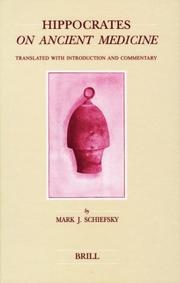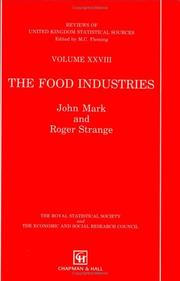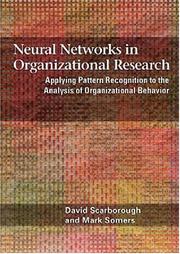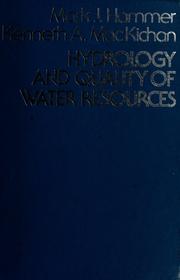| Listing 1 - 10 of 15 | << page >> |
Sort by
|
Book
Year: 2006 Publisher: [Place of publication not identified] : Project Gutenberg,
Abstract | Keywords | Export | Availability | Bookmark
 Loading...
Loading...Choose an application
- Reference Manager
- EndNote
- RefWorks (Direct export to RefWorks)
Book
Year: 2006 Publisher: [Place of publication not identified] : Project Gutenberg,
Abstract | Keywords | Export | Availability | Bookmark
 Loading...
Loading...Choose an application
- Reference Manager
- EndNote
- RefWorks (Direct export to RefWorks)

ISBN: 9004137580 9786610859436 1429426934 9047405013 1280859431 1433703769 9781429426930 9789004137585 9780203490914 0203490916 9781433703768 9781280859434 6610859434 9789047405016 Year: 2005 Volume: 28 Publisher: Leiden Boston Brill
Abstract | Keywords | Export | Availability | Bookmark
 Loading...
Loading...Choose an application
- Reference Manager
- EndNote
- RefWorks (Direct export to RefWorks)
The Hippocratic treatise On Ancient Medicine , a key text in the history of early Greek thought, mounts a highly coherent attack on the attempt to base medical practice on principles drawn from natural philosophy. This volume presents an up-to-date Greek text of On Ancient Medicine , a new English translation, and a detailed commentary that focuses on questions of medical and scientific method; the introduction sets out a new approach to the problem of the work's relationship to its intellectual context and addresses the contentious issues of its date, authorship, and reception. The book will be of interest to scholars of ancient medicine and ancient philosophy, as well as anyone concerned with the history of science and scientific method in antiquity.
Geneeskunde [Griekse ] --- Geneeskunde [Griekse en Romeinse ] --- Geneeskunde [Romeinse ] --- Greek and Roman medicine --- Griekse en Romeinse geneeskunde --- Medicine [Greek ] --- Medicine [Greek and Roman ] --- Medicine [Roman ] --- Médecine grecque --- Médecine grecque et romaine --- Médecine romaine --- Medicine, Greek and Roman --- Medicine --- Greek medicine --- Medicine, Roman --- Medicine, Unani --- Roman medicine --- Tibb (Medicine) --- Unani medicine --- Unani-Tibb (Medicine) --- Medicine, Ancient --- Hippocrates. --- Hippocrates --- Early works to 1800 --- Health Workforce --- Medicine, Greek and Roman.
Book
ISBN: 1473886155 9781473886155 9781473886148 1473886147 1473823358 9781473823358 Year: 2016 Publisher: Pen and Sword
Abstract | Keywords | Export | Availability | Bookmark
 Loading...
Loading...Choose an application
- Reference Manager
- EndNote
- RefWorks (Direct export to RefWorks)
"William Boyd Dawkins was a controversial Victorian geologist, palaeontologist and archaeologist who has divided opinion as either a hero or villain. For some, he was a pioneer of Darwinian science as a member of the Lubbock-Evans network, while for others he was little more than a reckless vandal who destroyed irreplaceable evidence and left precious little for future generations to assess. In this volume, Professor Mark White provides an unbiased archaeological and geological account of Boyd Dawkins' career and legacy by drawing on almost twenty years of research as well as his archive of published and unpublished work which places him at the centre of Victorian Darwinian science and society. White examines his work in both the field and study to provide a critical yet balanced account of his achievements and standing in relation to the field today as well as among his peers. At the heart of this book is a detailed study of the circumstances surrounding the Victorian excavations at Creswell Crags, where two celebrated finds became a cause celebre"--Publisher's website.
Archaeologists --- Dawkins, William Boyd, --- Creswell Crags (England) --- England. --- England --- Discovery and exploration. --- Dawkins, W. Boyd --- Angleterre --- Anglii͡ --- Anglija --- Engeland --- Inghilterra --- Inglaterra --- Creswell Gorge (England)
Book
ISBN: 0471037877 Year: 1977 Publisher: New York (N.Y.) : Wiley,
Abstract | Keywords | Export | Availability | Bookmark
 Loading...
Loading...Choose an application
- Reference Manager
- EndNote
- RefWorks (Direct export to RefWorks)
Sewage disposal --- Water-supply engineering --- Sewage disposal. --- Water-supply engineering.
Book
Year: 1990 Publisher: Ann Arbor : University Microfilms International (UMI),
Abstract | Keywords | Export | Availability | Bookmark
 Loading...
Loading...Choose an application
- Reference Manager
- EndNote
- RefWorks (Direct export to RefWorks)
Book
ISBN: 9781805433026 9781648250903 Year: 2024 Publisher: Rochester, NY, USA : Suffolk, UK University of Rochester Press ; Boydell & Brewer Limited
Abstract | Keywords | Export | Availability | Bookmark
 Loading...
Loading...Choose an application
- Reference Manager
- EndNote
- RefWorks (Direct export to RefWorks)
"Stravinsky's influence on Debussy in 1910-13, rarely discussed, is demonstrated here in the many modernistic features of such works as the Preludes Book II, Khamma, and Jeux. This book reassesses the relationship between Debussy and Stravinsky, two of the most important composers of the early twentieth century. When the Russian composer traveled to France in 1910 to attend the premiere of his first ballet, The Firebird, he was invited to dine at the French composer's house, and a photo of the two commemorates the beginning of their friendship. Stravinsky was already acquainted with many of Debussy's earlier works, and Debussy was introduced to the Russian composer's first three ballets between 1910 and 1913. Stravinsky's early works contain Debussy-like passages, as in the opening measures of his opera The Nightingale, which echoes the opening measures of Debussy's "Nuages." As author Mark McFarland here shows, however, the adoption on Debussy's part of characteristics from Stravinsky's style is, perhaps surprisingly, no less substantial. Debussy borrowed motifs from both The Firebird and Petrushka as well as the Russian tradition of Leitharmony in his little-known ballet Khamma, and Stravinsky's ballets, including The Rite of Spring, seems to have sparked an exploration into octatonic harmony in Debussy's second book of piano preludes. McFarland's close analysis of parallel passages and usages in works of the two composers also reveals that Debussy eventually distanced himself from Stravinsky, perhaps fearing to seem like an acolyte rather than an innovator. His borrowings from Stravinsky (and Russian style) gradually disappear, as McFarland demonstrates by close attention to passages in some of the late works, which move in the direction of a neoclassicism that Stravinsky himself would soon adopt and expand further"--
Music --- History and criticism. --- Debussy, Claude, --- Stravinsky, Igor, --- Stravinsky, Igor, --- Criticism and interpretation. --- Criticism and interpretation. --- Influence.

ISBN: 0412356600 Year: 1992 Publisher: London : Chapman & Hall,
Abstract | Keywords | Export | Availability | Bookmark
 Loading...
Loading...Choose an application
- Reference Manager
- EndNote
- RefWorks (Direct export to RefWorks)

ISBN: 1591474159 Year: 2006 Publisher: Washington, DC : American Psychological Association,
Abstract | Keywords | Export | Availability | Bookmark
 Loading...
Loading...Choose an application
- Reference Manager
- EndNote
- RefWorks (Direct export to RefWorks)
Management --- Business & Economics --- Management Styles & Communication

ISBN: 0471026816 Year: 1981 Publisher: New York (N.Y.) : Wiley,
Abstract | Keywords | Export | Availability | Bookmark
 Loading...
Loading...Choose an application
- Reference Manager
- EndNote
- RefWorks (Direct export to RefWorks)
Water resources development --- Water quality management --- Hydrology --- Water --- Ressources en eau --- Eau --- Hydrologie --- Law and legislation --- Exploitation --- Qualité --- Gestion --- Hydrology. --- Water quality management. --- Water resources development. --- Qualité
| Listing 1 - 10 of 15 | << page >> |
Sort by
|

 Search
Search Feedback
Feedback About UniCat
About UniCat  Help
Help News
News